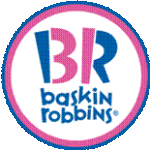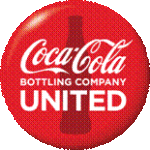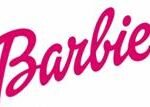 What are Brand Guidelines?
What are Brand Guidelines?
Brand guidelines are simple rules or standards written down to help represent your brand correctly. Brand guidelines are also called brand books or style guidelines. These rules help your team and your stakeholders understand how to identify the brand.
These guidelines are usually represented in a document format and are shared with everyone associated with the brand. By checking the guidelines, people can understand how exactly the brand name, the logo, the tagline, and other aspects of the brand should be mentioned.
Why are they Important?
- Brand guidelines help put across a consistent message to the audience
- It makes it easier for the audience to relate to the identity of the brand
- It makes it easy for all your developers, designers, and marketing executives to create consistent and relatable brand content
- It provides pre-set tools for your team to work with
- Makes it easy for your customers to differentiate your brand from other similar ones
Who needs brand guidelines?
- If you are a new brand waiting to start-up or has just started-up, you will have to spend sometime with experts in creating brand guidelines.
- If you are an already existing brand but don’t have a consistent format for using the brand name, logo, and taglines, then you will need to get your guidelines documented right away. This is one of the important ways to add value to your brand.
- If you are a company looking to rebrand, then you will need brand guidelines in place to ensure the newer brand identity is created and maintained right.
It takes the help of a branding agency and expert designers to create your brand identity or style book for you. This is a one-time task that is going to bring your brand consistency, reliability, and identity for as long as you exist.
Steps to design your brand guidelines
1. Choose a logo (and think carefully about composition)
One of the most basic and vital steps for creating brand guidelines is to decide on a logo. A logo is the face of your brand. You can recognize many top brands using just their logo without the need to check the brand name. A logo has to be that attractive, simple, and unique.
Logo composition involves the following:
- Format
- Color hues used
- The symmetry of the logo/ typographic brand name
- Size/proportion of the logo/ typographic brand name
- Special effects
Your logo should talk about your brand’s personality and the right logo will add positivity to your brand’s identity. Below are some of the simplest yet unique logos you should check out. These brands have managed to reach the minds of the customers with the right composition of their logos.
2. Pick a color palette
The color palette for your brand’s features like name, logo, and tagline determines what kind of a company you are. Your color palette should be documented with the exact hues and shades used.
Take Google’s color scheme for instance. The logo immediately says the brand is fun and exciting. Baskin Robbins is an ice cream brand with a cute pink, blue, and white color theme. The color and the font are attractive and make you feel at home. Coco-Cola has a bright red color palette. The color red is considered powerful, confident, and youthful.



Here is how different color hues are represented emotionally.
Orange – cheerful, young, friendly
Blue – strength, dependability
Green – health, growth
Yellow – optimism, positivity
Black and White – balanced, neutral
3. Decide on the typography

Typography is the art of putting together a group of letters so that they are attractive, legible, and stylish. Typography is not just about identifying the right font for your brand name. It is about details like the spacing between the letters, the color contrast, the font size, and the overall arrangement.
The typography of the brand name plays a role in how people perceive the product or service offered. Here are few things a good typographic service has to achieve.
- Set the mood
- Convey a message
- Create or change perceptions
Do not underestimate what typography can do to your brand name. Clever typography is one reason why you feel an instant connection to the below brands.



4. Select the perfect brand imagery
There are millions of media content on the internet updated every day. Images are posted on social media platforms, on mobile apps, and blogs by small and big brands. How do you make your content make a mark? Brand imagery includes all the visuals you showcase to your customers and users as a part of your brand image. It is a part of your brand’s aesthetics.
Visual communication is very strong. People can emote more by seeing a visual than by reading a long article. A logo is a part of your brand imagery. There is so much more to this too. Here are some of the items that are a part of brand imagery.
- Photos
- Banners
- GIFs
- Graphics
- Videos
- Animation
- Charts and graphs
- Icons
Your brand guidelines should include a list of what kinds of imagery work for you and your brand. Good brands make sure the photos and graphics they share are of high quality and high pixel ratio. Their UI is designed to match the brand’s theme too. Such imagery also becomes part of the stationery used by the brand including letterheads and business cards.
5. Include examples of correct and incorrect usage
Your guidelines should not contain only a list of what’s right. It should also tell people who use the guidelines what should not be done. In many cases, incorrect use of brand imagery, brand name, and other details is considered illegal.
Here are some common incorrect usages of brand details you should add to your guidelines.
- Reproducing the logo or brand name in different colors
- Changing the background color of brand names/images
- Squeezing or stretching the logo or brand name
- Adding special effects to the brand imagery
- Adding newer elements to the brand’s name or logo


6. Put your brand guidelines together in a brand manual
Once you have a list of all the necessary details of your company’s brand guidelines, it is time to put them together in a brand manual. Most companies have both a physical copy of the manual and a digital version. Share the manual with your stakeholders and make sure they follow the guidelines when they share the brand’s details anywhere.
Encourage your stakeholders to check the manual every time they have to mention the brand officially or unofficially.
One growing trend in creating brand guidelines is to create a one-page sheet that contains the most used guidelines and using that as a quick reference. This helps save time.
7. Update your brand guidelines regularly
Brands and their philosophies keep changing as they grow. People’s expectations about the brand keep changing too. Conduct market research and find out how your customers perceive your brand. Does that align with your goals? If not, you may want to consider updating/changing your brand guidelines.
Have regular discussions with your stakeholders about what works and what doesn’t. Based on that, be ready to make changes to your guidelines regularly.
Conclusion
Brand guidelines are the easiest ways to adhere to the theme/idea behind a brand and maintain consistency and quality in how the brand is perceived outside. Incorrect representations of your brand including different colors, misshapen logos, and wrongly pronounced brand names can all bring down your reputation and create mistrust amongst customers and clients.
Create a guideline manual and adhere to it every time you mention the brand somewhere. This will help build your brand image and help people recognize you easily.
If you have not thought much about brand guidelines, we are here to help. Get in touch with us and we will help you get a free consultation with our branding team. We will understand your business and help you create the best band manual that will help you stay consistent and professional.
